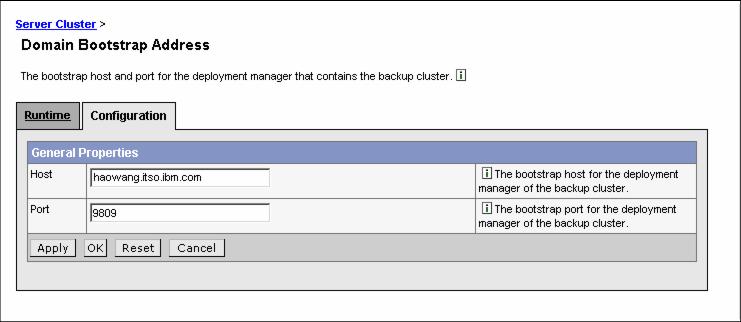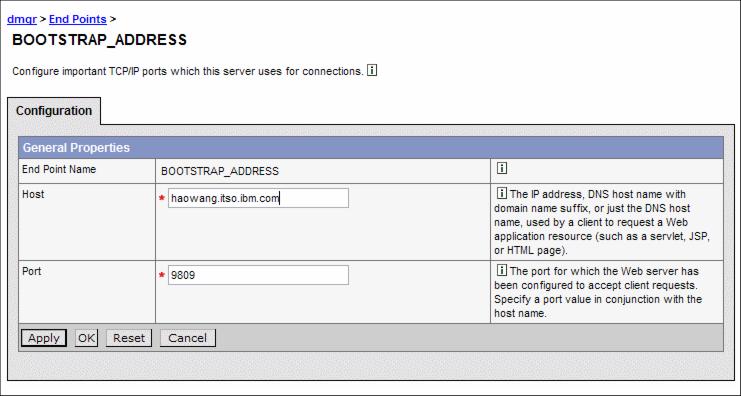Backup Cluster support
Restriction: This function is only available in IBM WAS Enterprise V5.0.2 and V5.1. It is not available in IBM WAS Network Deployment. |
IBM WAS Enterprise V5.0.2 and V5.1 supports a mirrored backup cluster that can fail over IIOP requests from a primary cluster in one cell into the mirrored backup cluster in another cell if the primary cluster should fail.
Before you can enable this backup cluster support, you need to create the backup cluster in another cell with the same cluster name as the primary cluster and deploy the same applications into both the primary cluster and the mirrored backup cluster, with the same resources in the backup cluster as in the primary cluster. The primary cluster and the backup cluster must reside in separate cells. The backup cluster bootstrap host and port determine which cell contains the backup cluster.
Then you need to enable backup cluster support in the Administrative Console:

Figure 6-13 Backup Cluster configuration
As you can see, you have two choices for the setting: Runtime and Configuration. The difference is that the runtime setting will not survive a Deployment Manager restarts, so it is temporary while the configuration setting remains active after a Deployment Manager restart.

Figure 6-14 Backup cluster support - Enter bootstrap Host and Port

This is all that needs to be done to enable the backup cluster. If after a failover cluster members in the primary cluster subsequently become available again, the mirrored cluster support attempts to fail back the requests to the primary cluster. This fail back is automatic.
For mutual failback support the primary cluster must be defined as a backup for the backup cluster. In other words, both primary and backup clusters must have a backup configured, and each cluster's backup must point to the opposite cluster.
Please note that the mirrored cluster failover support is not a cell level failover or Node Agent failover. For the most part, the mirrored cluster support depends on a running Deployment Manager and Node Agents, and is limited to cluster failover only. For example, if the primary cluster's entire cell stops processing, a new client's requests to the primary cluster will fail and is not sent to the backup cluster. This is because information regarding the backup cluster cannot be retrieved from the primary cluster's cell because the primary cluster's cell is not processing. On the other hand, if the primary cluster's cell Deployment Manager or Node Agents and appservers stop processing after the client has already been sending requests to the primary cluster, the client already knows about the backup cluster and is able to send the requests to the backup cluster.
For more information about this topic, see the WebSphere InfoCenter.
WebSphere is a trademark of the IBM Corporation in the United States, other countries, or both.
IBM is a trademark of the IBM Corporation in the United States, other countries, or both.